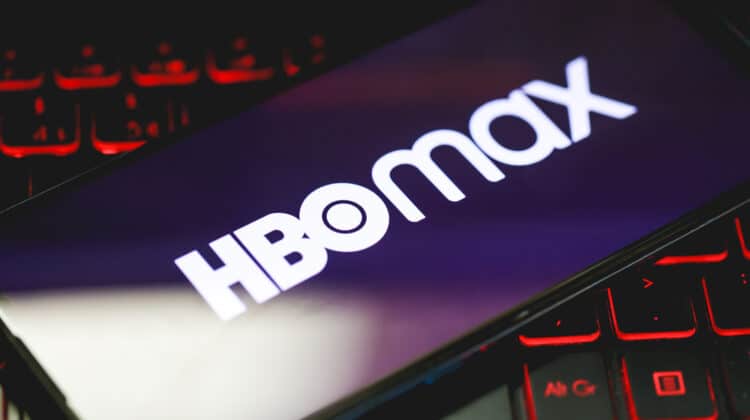
You’ve bought a high-speed internet connection, and you’re ready to stream all your favorite shows and play your favorite games.
However, there’s a slight problem.
You’re not getting the full download speed that the internet company advertised.
Before you cancel your subscription, you should consider whether the cause is internal and what you might be able to do about it.
Let’s take a look at the list of potential causes and solutions to your download speed problem.
Not Getting Full Download Speed (Causes, Fixes)

You might not be getting full download speed because your router is misconfigured or poorly placed.
Faulty wires, obsolete system drivers, and system conflict are also common causes.
Finally, you may be reading the numbers wrong because there’s a difference between megabits and megabytes: the latter is one-eighth the size of the former.
Let’s break these causes down.
Cause 1: You’re Mistaking Bits For Bytes

It’s easy for regular users to get tricked by the difference between bits and bytes.
A bit is the smallest piece of information a computer can process.
It’s either zero or one.
On the other hand, a byte is a collection of eight bits.
Computer specialists designate bits with a small b while using a capital B for bytes.
Many people get confused because internet companies advertise their packages in megabits per second (Mbps).
On the other hand, browsers and download applications show download speeds in megabytes per second (MBps).
To see if you’re getting the full download speed, you need to divide the number your internet service provider gives you by eight.
For example, with a 200 Mbps connection, your maximum download speed will be 25 MBps.
However, your average download speed will be 10 to 15 MBps because ISPs advertise maximum bandwidths.
Since your connection is shared among four to 16 users, depending on the company’s infrastructure and your contract terms, you won’t get the full bandwidth all the time.
To understand the situation, let’s consider an example.
The internet company has a 1 Gbps fiber-optic connection coming to your neighborhood.
They sign contracts with ten users.
The company can guarantee that each user will get at least 100 Mbps bandwidth in this scenario.
However, because it’s not very likely that all the users will be online at every given moment, they advertise the average bandwidth, which is closer to 200 Mbps.
For this reason, if you read the fine print in your contract, you’ll see that the guaranteed bandwidth is lower than the nominal one.
If you’re getting somewhere between 50 and 70 percent of the full download speed you’re supposed to get, there’s a high chance that you don’t have a problem.
It’s just the way internet companies provide services to their customers.
We recommend running a speed test to be sure.
Run A Speed Test
A speed test analyzes three aspects of your connection: upload speed, download speed, and latency.
Using a test to measure your connection speed is more reliable than simply checking the download speed on your browser.
These tests are optimized to eliminate the outside factors that affect download speed, such as browser plugins and firewalls.
Moreover, they run each test multiple times and average the results to eliminate one-time abnormalities.
It’s best to use multiple internet speed test tools to ensure consistent results.
Some of the top ones that we recommend are Speedtest.net, CloudFlare, and Fast.com.
It’s also a good idea to run the tests at different times to see if your speed drops significantly during certain hours of the day.
If the test results are within the expected range but you’re not satisfied with your download speed, you can upgrade to a more expensive plan.
On the other hand, if the results are significantly less than what they should be, you should consider the causes and solutions below before calling the company’s customer support.
We’ll start with the easiest things to try and gradually move on to more complex solutions.
Cause 2: Software Issues

Many applications affect your internet speed by either causing delays, restricting your usage, or hogging the bandwidth.
These apps are the number one reason users experience slow downloads.
We’ll go over the most common ones.
A. Turn Off Your VPN
A Virtual Private Network (VPN) is a secure tunnel that lets you connect to a specific network.
Most people use VPNs to connect to their company’s workstations when they want to work remotely.
Others use them to mask their identity online and increase their security.
However, a VPN can severely limit your download speed because all the packets headed to your computer have to take a detour to another server before reaching your device.
The middle server might not be able to forward your packets quickly because VPNs connections are shared among many users.
And even if you use a premium VPN or one that your company gave you, the detour will still take time.
What’s more, for security reasons, companies usually limit the type of data their employees can download.
If you’re trying to download a file or stream a video or game while connected to a VPN, turn it off and see if your numbers improve.
If you don’t know whether you have VPN software on your computer, check your IP address and location on Ipleak.net.
The information should match your area.
Otherwise, you’re most likely on a private network.
In addition, here’s a list of the most famous VPN software.
See if you have any of them installed on your device:
- Windscribe
- TunnelBear
- NordVPN
- ExpressVPN
- CyberGhost
- Surfshark
- IPVanish
B. Temporarily Disable Your Firewall
Modern operating systems come with security software that monitors and filters the data packets traveling to and from your computer.
This software is called a firewall, and it can limit your download speed for various reasons.
Most importantly, because it analyzes all the network packets, it slightly slows down your downloads.
However, misconfiguration can also cause issues.
For example, if your firewall flags your download packets as low-priority, it’ll deliberately send them to the back of the line and process other packets before them.
To see if the firewall is causing your issue, temporarily turn it off.
Here are the steps for Windows 10/11:
- Open the Start Menu and type in Settings.
- Navigate to Updates & Security > Windows Security > Firewall & network protection.
- Select Public network.
- Turn off the toggle button under Windows Defender Security.
- Restart your download and check the speed. (You can also do a speed test as explained in the previous section.)
If the download speed returns to normal levels, you need to exempt your browser and download manager from the firewall’s rules.
Explaining how to do that is beyond the scope of this article, but we recommend Microsoft’s official best practices for configuring your firewall.
Don’t forget to turn the firewall back on regardless of the results since you don’t want to leave your computer vulnerable to attacks.
Note: If you have installed extra internet security or antivirus software, turn off that firewall too when troubleshooting the issue.
C. Use Incognito/Private Browsing Mode
Sometimes browser add-ons cause conflicts that reduce your download speed, especially if you have proxy, security, or network monitoring add-ons.
To rule out those add-ons, open a new incognito window on Chrome (called private browsing in Firefox) by pressing Ctrl + Shift + N (or Ctrl + Shift + P on Firefox).
Retry your download and check the speed.
If the issue is resolved, you need to disable the add-ons one by one and test the download until you find the one add-on that’s limiting your speed.
To manage your extensions on Chrome, click the three-dot menu in the top right corner.
Then select Settings > Extensions.
On Firefox, navigate to the menu and click Add-ons and themes.
Alternatively, you can press Ctrl + Shift + A on your keyboard.
D. Turn Off Automatic Updates
Automatic updates are a great feature in Windows because they let you get all the newest security patches and fixes without any effort.
However, some updates require downloading large files that could reach a few gigabytes.
Because the downloads happen in the background, you’re unlikely to notice them.
The update could end up hogging your bandwidth, and you’re none the wiser.
If you have an active download, it’ll show up in your taskbar tray next to the clock.
Click on the small triangle and see if you can find an icon that resembles downloading.
The more permanent solution is to turn off automatic updates by following these steps:
- Open the Start Menu and type in Settings.
- Navigate to Updates & Security.
- The Windows Update tab will open by default.
- Click Pause updates for 7 days.
Once you’re sure you don’t have any active downloads and you’ve turned off automatic updates, try your download again.
If the issue persists, move on to the next step.
E. Use A Download Manager
Browsers don’t take advantage of the total available bandwidth to download files.
If you intend to download large files, you need a download manager, an app that increases your download speed while giving you extra useful features.
Most download managers let you pause and resume downloads, schedule automatic downloads, manage file paths, and download files in batches.
They increase your download speed by establishing multiple simultaneous connections (aka threads) to the server and using up all the available bandwidth.
Internet Download Manager and FlashGet are two of the most popular apps in this category.
Give them a try and see if you get a noticeable speed bump.
Note: Some servers intentionally prevent multiple threads and resumable downloads to preserve their resources. If the server you’re downloading from is one of those, a download manager won’t improve your situation. You can easily find the server’s settings when connecting to it using a download manager.
Cause 3: Hardware Issues

Hardware issues are less common when you’re not getting the full download speed unless all your apps and games are affected.
If that’s the case, it’s worth looking at your router.
Note: We recommend checking the download speed on another device with proper software settings before moving to your router. You need to rule out software issues before getting started with your router to avoid wasting your time.
A. Reboot Your Router
As with all hardware-related issues, the first thing to do is to reboot the device.
Doing so allows the router to purge its cache and read all its settings from the on-device memory again.
The router will also establish a new connection to the internet and acquire a new IP address.
As a result, your problem may simply disappear after a reboot.
B. Bring Your Router Closer To Your Device
Your WiFi connection quality depends heavily on the distance between your router and device and the presence of obstacles such as walls.
You need to ensure your router is optimally placed to increase signal strength.
You can use software tools to monitor and measure your signal strength and make adjustments.
Netspot and inSSIDer are our top recommendations, and they’re both free.
These tools also come with plenty of extra features to analyze your network’s performance without network management expertise.
C. Eliminate Signal Interference
If your signal strength isn’t adequate, but your device and router are close to each other, check for sources of interference.
WiFi signals are especially prone to interference from kitchen appliances such as a loud refrigerator or a washing machine that makes too much noise.
Even baby monitors and speakers can affect your signal strength.
The same tools in the previous section help you identify the source of interference and do something about it.
After eliminating the noise, check your signal strength and download speed.
D. Switch To A Different Wireless Channel
WiFi routers can communicate over two different frequencies.
As one frequency might be saturated or receive external noise in an area, switching to the other can boost your signal strength and improve your download speed.
Log on to your router’s admin dashboard and switch the preferred frequency to the other value.
The exact steps will vary depending on your router’s manufacturer and model.
You can search for tutorials by googling “switch WiFi frequency band” plus your router’s model and manufacturer.
E. Switch To Ethernet
Although WiFi is highly convenient, it’s not always reliable.
On the other hand, wired connections are famous for having considerably low latency, affecting download speed.
So, if you have access to an RJ45 cable and your device supports it, quickly connect over Ethernet and check your download speed.
Note: In addition to more reliability, wired connections offer better security because if anyone wants to intercept your data packets, they need physical access to your wires.
F. Upgrade Your Router’s Firmware
A router’s firmware is a piece of software that controls the router’s function.
As new technologies arrive and new security issues arise, you must keep your router’s firmware up to date.
Updating your firmware allows you to take advantage of the latest speed-enhancement mechanisms.
To perform the update, connect your device via a cable to your router.
Then download the firmware files from the manufacturer’s website, and follow the instructions.
Cause 4: Network-Level Issues

Sometimes, your hardware and software are fine, and the issue lies with your network.
In these situations, your best bet is to wait out the problem or switch ISPs if possible.
Let’s consider a few common situations and your potential options.
A. Congestion And Packet Loss
Congestion occurs when many users in the same area try to connect to the internet at roughly the same time.
It usually happens during the evening when everyone is at home trying to stream a movie or scroll through their Instagram feed.
When congestion occurs, the network can’t process data packets from different computers on time.
As a result, connections time out, and your download severely drops or even comes to a grind.
The best solution is to delay your download until the network clears.
B. Call Customer Support
If you’ve gone through the list of causes and fixes without any success, solving your problem requires someone with more technical knowledge and experience.
Contact the ISP’s support and explain your problem.
Also, explain the solutions you’ve tried and the results.
The more information you provide, the more they’ll be able to help you.
If they can’t resolve the issue, then you should consider taking your business to another internet company.
NEXT: Why Is Paramount Plus Buffering? (Reasons, Fixes)


























I have a good fiber connection, with a speed test result showing about 200mbps download. But when I get apps from the app store, instead of the supposed 3-5 seconds, it takes at least 2 minutes or more to download. Shouldn’t it be instant with this kind of speed? I face this issue where the internet doesn’t “feel” fast at all, even though all the multiple tests I run show the results as super fast.